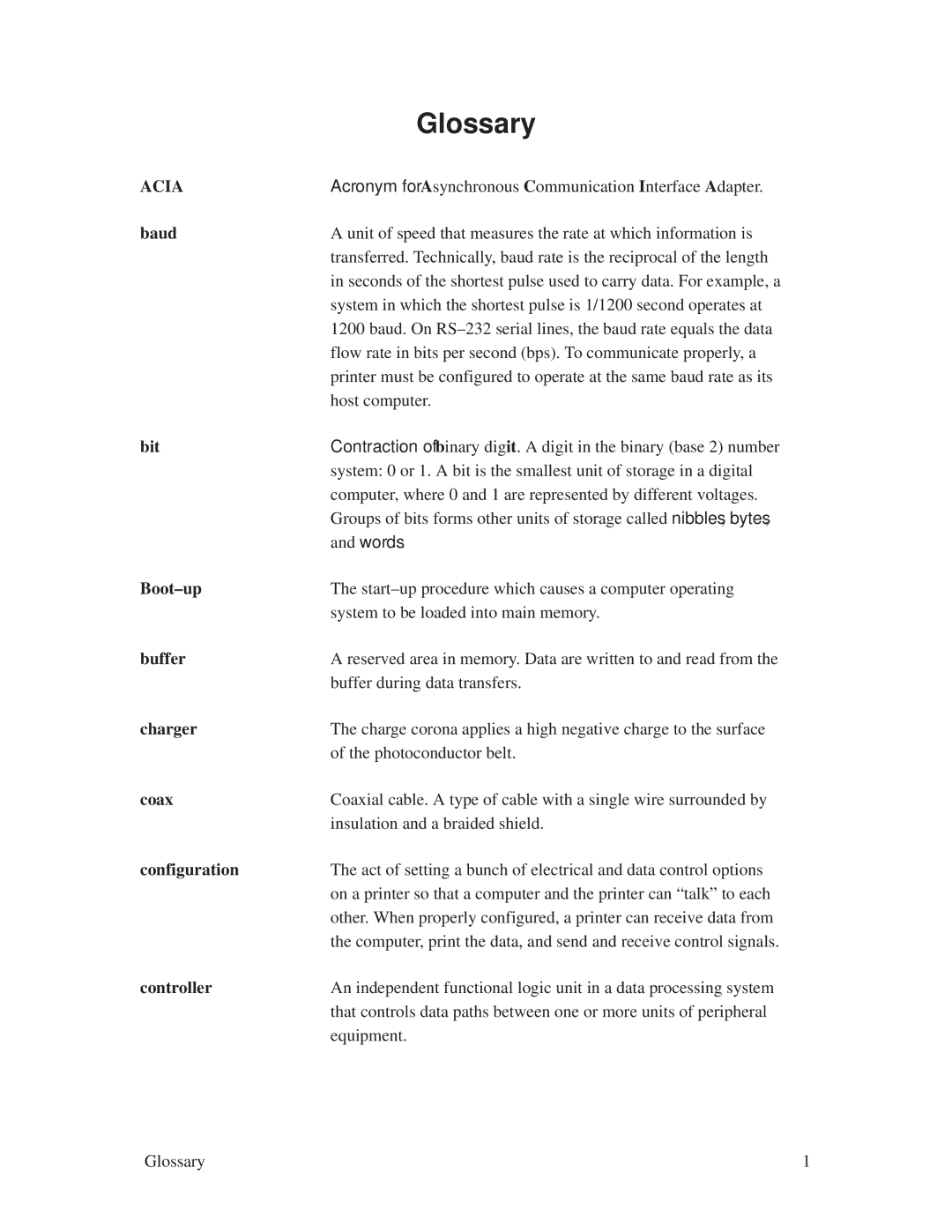| Glossary |
ACIA | Acronym for Asynchronous Communication Interface Adapter. |
baud | A unit of speed that measures the rate at which information is |
| transferred. Technically, baud rate is the reciprocal of the length |
| in seconds of the shortest pulse used to carry data. For example, a |
| system in which the shortest pulse is 1/1200 second operates at |
| 1200 baud. On RS±232 serial lines, the baud rate equals the data |
| flow rate in bits per second (bps). To communicate properly, a |
| printer must be configured to operate at the same baud rate as its |
| host computer. |
bit | Contraction of binary digit. A digit in the binary (base 2) number |
| system: 0 or 1. A bit is the smallest unit of storage in a digital |
| computer, where 0 and 1 are represented by different voltages. |
| Groups of bits forms other units of storage called nibbles, bytes, |
| and words. |
Boot±up | The start±up procedure which causes a computer operating |
| system to be loaded into main memory. |
buffer | A reserved area in memory. Data are written to and read from the |
| buffer during data transfers. |
charger | The charge corona applies a high negative charge to the surface |
| of the photoconductor belt. |
coax | Coaxial cable. A type of cable with a single wire surrounded by |
| insulation and a braided shield. |
configuration | The act of setting a bunch of electrical and data control options |
| on a printer so that a computer and the printer can ªtalkº to each |
| other. When properly configured, a printer can receive data from |
| the computer, print the data, and send and receive control signals. |
controller | An independent functional logic unit in a data processing system |
| that controls data paths between one or more units of peripheral |
| equipment. |
Glossary | 1 |
